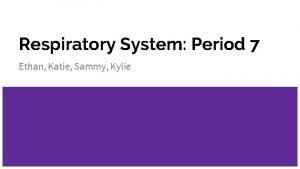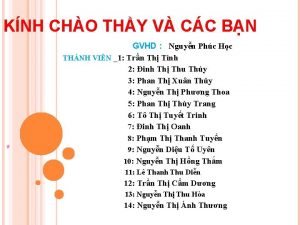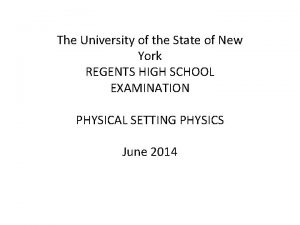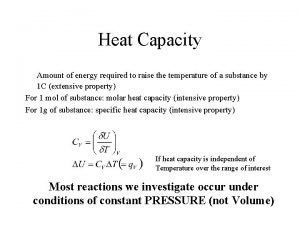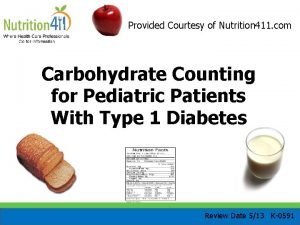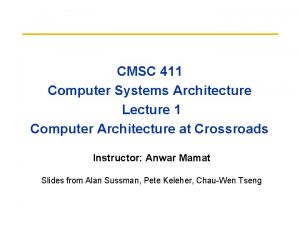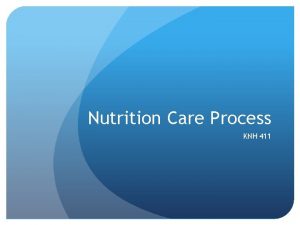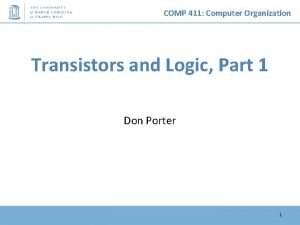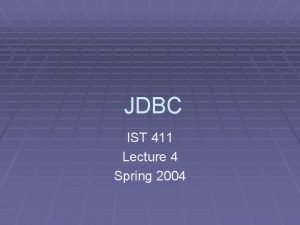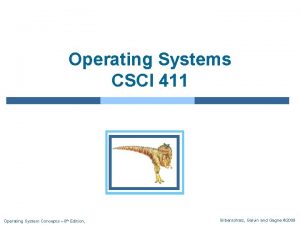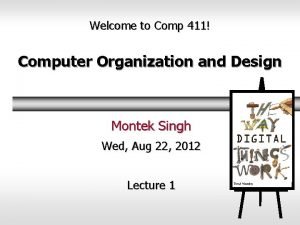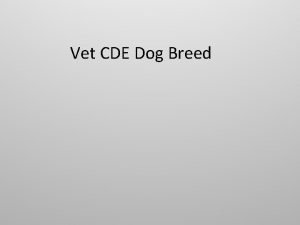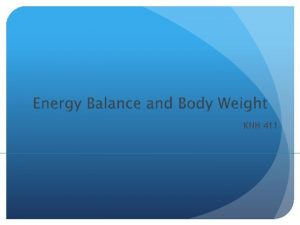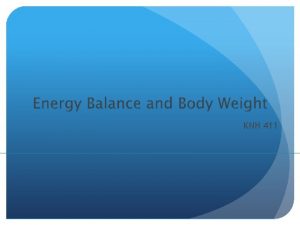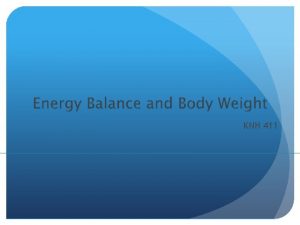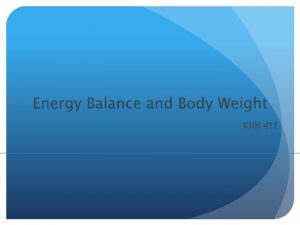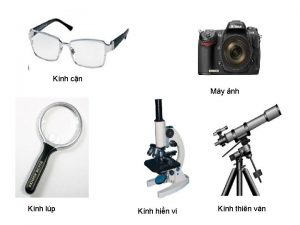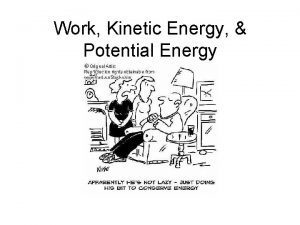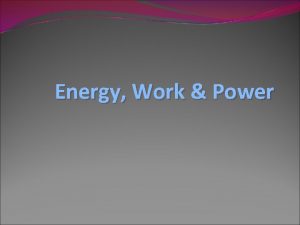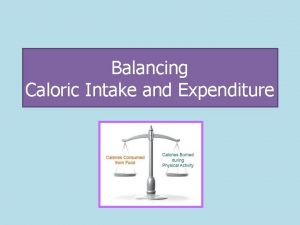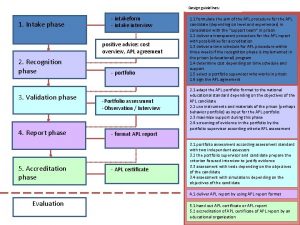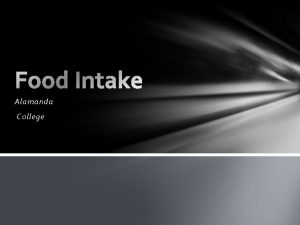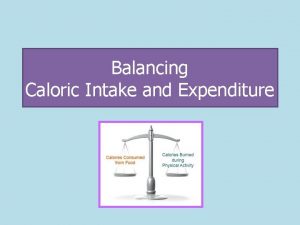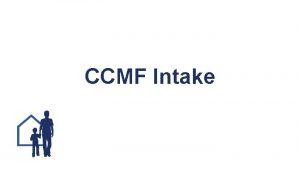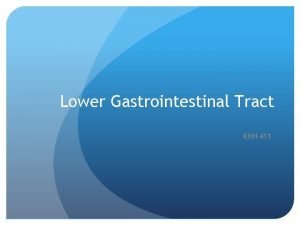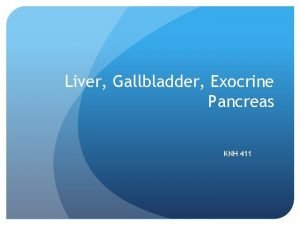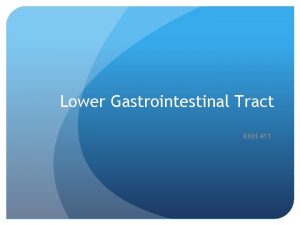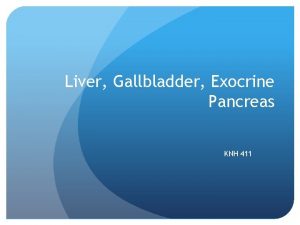KNH 411 1 Intake Energy amount of work
















































- Slides: 48

KNH 411 1

Intake Energy- amount of work to move 1 kilo for 1 meter with 1 Newton Measured in kilojoules (k. J) or kilocalories (kcal) - food energy Determined by bomb calorimeter Nutrition Facts label, food composition tables, dietary analysis software

24 -Hour Energy Expenditure (EE) Amount of energy for function of liver, heart, lung, brain, and kidney Resting energy expenditure (REE) Thermic effect of food Physical activity

Resting energy expenditure (REE) Sustain life, keep vital organs functioning 60 -75% of EE, 1 kcal/kg body wt. /hr factors affecting REE Lean body mass Male sex Body temperature Age (decreases by 2% every decade after 30) Energy restriction Genetics Basal energy expenditure (BEE) Measured in morning when patient is without food for at least 12 hours Difficult to measure

Thermic effect of food (TEF) Measured for several hours postprandial Digest, absorb, metabolize, store, and eliminate nutrients 10% of EE Large meals raise TEF Fat has highest TEF, protein has lowest TEF Peaks 1 hour after eating, lasts 4 -6 hours

Physical Activity EE Most variable 20 -25% of EE Influenced by body weight, number of muscle groups used, intensity, duration and frequency of activity Higher in very active people Heavier people are trying to move more mass

Methods Equations Should include age, gender, weight, height, and physical activity Indirect calorimetry Doubly-labeled water (in human research) Direct calorimetry

Equations for estimating EE Harris-Benedict WHO Flaw- no heights used IOM DRI – estimated energy requirement (EER) Includes physical activity (PA) coefficient Separate calculations for overweight adults and overweight children and adolescents – based on BMI

© 2007 Thomson - Wadsworth


© 2007 Thomson - Wadsworth

© 2007 Thomson - Wadsworth

© 2007 Thomson - Wadsworth

Indirect Calorimetry Metabolic research or critically ill patients Measures inspired and expired air by minute ventilation (air in lungs) EE proportional to oxygen consumption and carbon dioxide production Best way to measure for ICU patients

Doubly Labeled Water “Gold standard” Mostly in research, complicated method, accurate within 12% 2 stable isotope forms of water Mixed with water, measures ions in urine Rate at which isotopes disappear is measured in urine over 2 -week period

Direct Calorimetry Chamber which measures heat expired through evaporation, convection, and radiation Chamber where fresh air inhaled and air exhales is compared, as well as heat radiated Rarely available

Interaction of nervous and endocrine systems Orexigenic- stimulant (anti-psychotic drugs), can stimulate appetite causing weight gain Anorexigenic- anti-anxiety, can cause weight loss Adaptive thermogenesis- energy, affected by extreme hot/cold temperatures

Appetite stimulated by hypothalamus Secretions of pancreatic and GI hormones Increase and decrease appetite and food intake Pradar-Willi syndrome- insatiable appetite, food intake in uncontrollable

Hormones affecting appetite & food intake Insulin- decrease Glucagon- decrease Amylin- decrease Cholecystokinin (CCK)- decrease Glucagon like peptide-1 - decrease Peptide YY- decrease Ghrelin- increase

Adipocyte – fat cell; mostly TG Storage site - 90% energy reserves Other functions White fat (WAT) vs. brown fat (BAT)- used for maintaining body temp Lipogenesis- synthesizing fat

© 2007 Thomson - Wadsworth

Adiponectin (body signaling body to store fat) and leptin (tells body to stop fat storage and use) stimulate storage Hypertrophy (adipose tissue mass increase- energy intake exceeds expenditure) and hyperplasia (adipose cells increase in number of cells- extreme obesity >40) of cells “Adiposity rebound” Happening in US today 1 -6 years old, body composition is increasing as a result of overnutrition

“Two compartment model” – fat (adipose) vs. fat-free mass (lean muscle) Skin fold used or underwater weighing biochemical Use of height and weight – BMI commonly used to assess obesity Does not directly measure fatness Clinical judgment should be used

Body Mass Index (BMI) Obese ≥ 30 calculation and classifications BMI percentiles CDC growth charts Pediatric population ≥ 95%th percentile = obesity ≥ 85%th percentile = overweight

Important predictor of health status Abdominal/central body fat Apple, android Lower body fat Hips and thighs, pear, gynoid Measured by waist circumference and waist-to-hip ratio

Waist circumference Increased risk of type 2 DM, htn. , dyslipidemia, CHD, metabolic syndrome > 40 in. males, > 35 in. females – “high risk”

Waist-to-hip ratio (WHR) Waist circumference/hip circumference Disease risk increases with WHR > 0. 95 in males and >0. 8 in females Key concept: fat deep within abdomen and around intestines and liver increases disease risk


“Globesity, ” “epidemic” In the U. S. - NHANES data Significant increases Overweight doubled in 90’s, greater today Canada Europe By race, ethnicity, SES, age

“The age of caloric anxiety” Type 2 diabetes High blood pressure CHD Cancer Mortality

Chronic energy intake exceeding energy expenditure Key contributors: Medical disorders and treatment Genetics Obesigenic environment

Medical disorders and treatment Cushings syndrome, hypothyroidism, Prader-Willi Pharmacological agents Smoking cessation Night eating syndrome Binge eating


Genetics 40 -50% of BMI explained by genetics Influences taste, appetite, intake, expenditure, NEAT, storage “Set-point” theory Multiple genes Predictive in families – parents & twins 80% of offspring with 2 obese parents 40% of offspring with 1 obese parent MZ twins more likely than DZ twins Study with one twin adopted out Found BMI correlates closer with genetics than environment

Obesigenic environment “Toxic food environment” – convenient availability of lowcost, tasty, energy-dense foods in large portions Evidence supports low-energy-dense foods for satiety Soups, fruits, vegetables, cooked whole grains Barriers – cost and convenience


Two-step process Assessment Management NIH algorithm for treatment Want to decrease weight BMI WAR Dietary recall

© 2007 Thomson - Wadsworth

Assessment BMI & waist circumference Current chronic diseases Diet and physical activity habits Patient’s readiness to lose weight Identify and address barriers, coping skills, self-efficacy Behavioral assessment Start by getting them to stop gaining weight

Management Use of recommended therapies Control of factors known to increase risk of morbidity Therapies include – diet, physical activity, behavioral therapy, bariatric surgery, pharmacologic treatment Lose 10% in 6 mo.


Nutrition therapy Reduce intake 500 -1000 kcal/d. Lose 1 -2 lbs. /week NIH low-kcalorie diet Minimize CVD risk factors – NCEP Therapeutic Lifestyle Changes diet 1000 -1200 kcal/d women, 1200 -1600 kcal/d men minimum Unclear whether altering macronutrient levels is beneficial

© 2007 Thomson - Wadsworth

Physical Activity Crucial for weight maintenance Minimum 30 -45 min moderate activity 3 -5 days/week Initiate slowly and gradually Can be programmed or lifestyle activities

Behavior Therapy Techniques for identifying and overcoming barriers Self-monitoring Stimulus control Rewards

Pharmacologic Treatment BMI ≥ 30 or ≥ 27 with risk factors Consider cost and side effects, and rebound weight gain Long-term use Sibutramine (Meridia) Orlistat (Xenical) Others for short-term use

Surgery Bariatric surgery – BMI ≥ 40 or ≥ 35 with risk factors Roux-en Y gastric bypass, vertical banded gastroplasty, adjustable band gastroplasty Assess benefits vs. risks Preoperative screening & education important

 Respiratory system maintain homeostasis
Respiratory system maintain homeostasis Knh
Knh Knh
Knh Which graph best represents the greatest amount of work
Which graph best represents the greatest amount of work Physics 03-01 work and the work-energy theorem
Physics 03-01 work and the work-energy theorem Chapter 4 work and energy section 1 work and machines
Chapter 4 work and energy section 1 work and machines The amount of energy required
The amount of energy required Section 2 describing energy (continued)
Section 2 describing energy (continued) Energy energy transfer and general energy analysis
Energy energy transfer and general energy analysis Energy energy transfer and general energy analysis
Energy energy transfer and general energy analysis Nutrition411
Nutrition411 Mgt 411
Mgt 411 Ece 411
Ece 411 Csce 411
Csce 411 Comp 411
Comp 411 Anwar mamat umd
Anwar mamat umd Nutrition diagnosis domains
Nutrition diagnosis domains Ada 411
Ada 411 Ist 411
Ist 411 Csce 411 tamu
Csce 411 tamu Csce 411
Csce 411 Cpsc 411
Cpsc 411 Csc 411
Csc 411 411 disability disclosure
411 disability disclosure Opwekking 411 tekst
Opwekking 411 tekst Ist 411
Ist 411 Party 411
Party 411 Csce 411
Csce 411 Uic cs 411
Uic cs 411 Comp 411
Comp 411 účet 411
účet 411 Rule 411
Rule 411 Ist 411
Ist 411 Csce 411
Csce 411 411 database
411 database Comp 411 unc
Comp 411 unc Spanish numbers
Spanish numbers Csci 411
Csci 411 Comp 411
Comp 411 Dog breed 411
Dog breed 411 Ecore dalton state
Ecore dalton state Cpsc 411
Cpsc 411 Csce 411
Csce 411 411 database
411 database Cpsc 411
Cpsc 411 Csce 411
Csce 411 Mgmt 310 purdue
Mgmt 310 purdue Zeta phi beta pledging process
Zeta phi beta pledging process Project intake process presentation
Project intake process presentation
